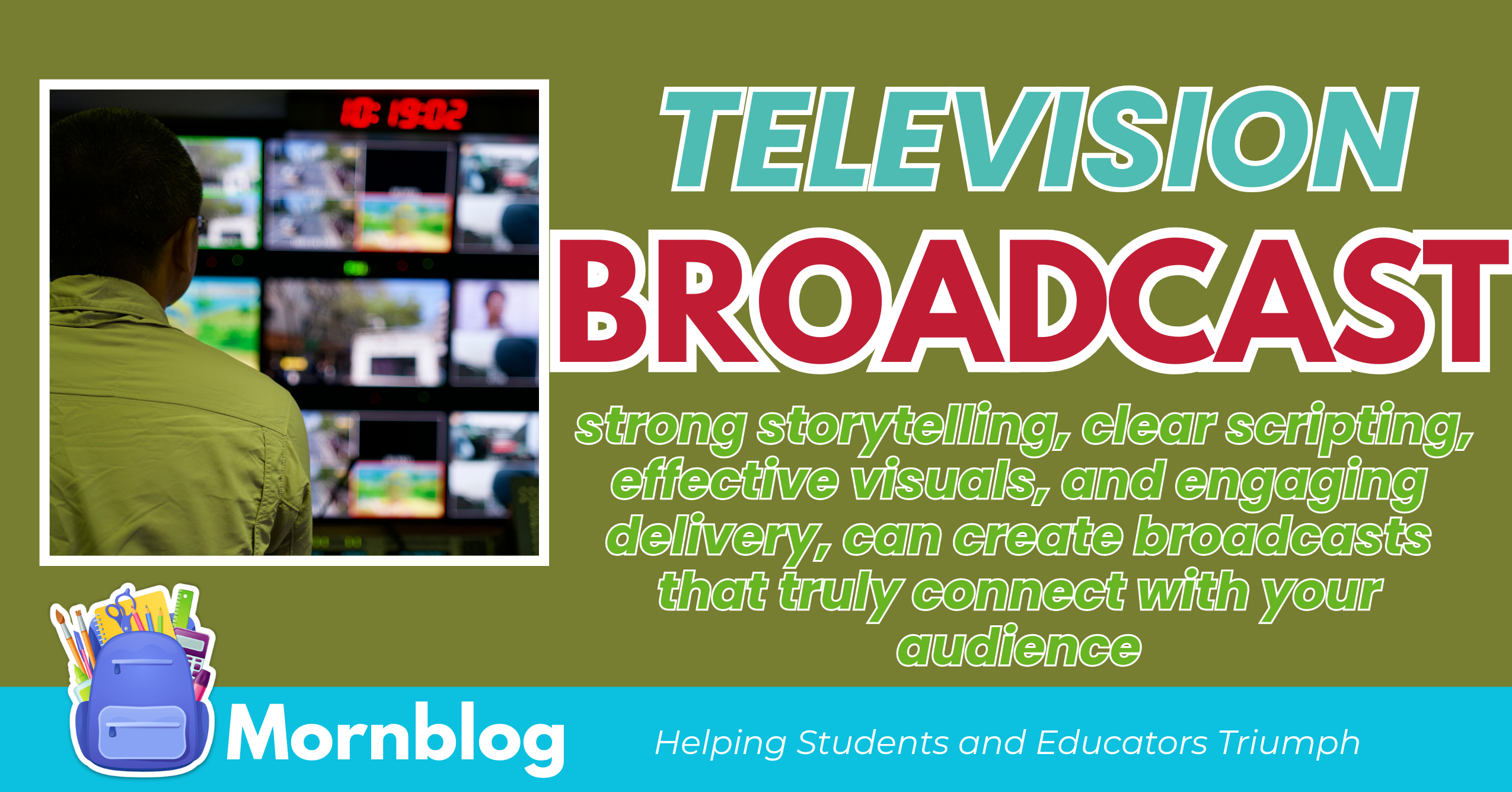6 Powerful Ingredients for a Perfect TV Broadcasting That You Should Start Implementing Now
TV broadcasting is a powerful way to share stories with your campus community. To make the best performance, you should know the ingredients for a perfect TV broadcasting.
Whether you’re reporting on a school event, an important campus issue, or a student achievement, creating a broadcast that captures attention is essential.
However, producing a great broadcast isn’t just about pointing a camera and talking.
It involves planning, storytelling, and knowing how to use your tools effectively.
Here are some simple yet important tips for campus journalists to create successful TV broadcasts.
Table of Contents

Interest of viewers
A great broadcast begins with a great story.
Before you start filming, think about the main message you want to share.
- What’s the purpose of your report?
- Who is your audience?
A strong, clear story will help guide the rest of your broadcast.
Whether it’s a school event or an interview, research well so that you understand the topic fully.
Talk to people involved, gather facts, and choose the most important parts of the story to share.
The more you understand your topic, the more confident you’ll be in your reporting.
Keep your script simple
A script is your roadmap for the broadcast. It helps you organize your thoughts and makes your delivery smoother.
Start with an intro to introduce the story and grab attention.
In the middle, explain the main points, and in the ending, summarize and conclude.
Keep it simple, your script should be easy to read and speak naturally.
Avoid complicated words or long sentences that can confuse the audience. Write for the ear, meaning the script should sound good when spoken out loud, not just when read silently.

Show the story through visuals
TV is all about visuals, so make sure the images and video you show support the story you’re telling.
Try to capture different angles to keep the broadcast interesting, this could include wide shots, close-ups, and action shots.
For example, if you’re covering a sports event, show the action as well as reactions from the crowd.
Adding B-roll footage (extra shots related to the story) helps keep the broadcast dynamic and engaging.
Don’t just talk about the event; show it to bring it to life for your viewers.
Familiarize with your equipment
Knowing how to use your camera and other equipment is a big part of producing a good broadcast.
You don’t need fancy gear, but you should know how to make the best use of what you have.
Practice using the camera, learn how to adjust the focus, lighting, and sound. Make sure the microphone is clear so your voice is easy to hear.
If you’re editing, make sure to learn basic editing tools like cutting, trimming, and adding simple transitions. Practice makes perfect, so spend time getting familiar with your tools and equipment.

Confidence and speaking clearly
When you’re on camera or recording, remember that you are speaking to an audience. Think about what they care about and how to keep their attention.
Speak clearly and confidently, and avoid speaking too fast or too slowly.
When interviewing someone, ask open-ended questions that invite them to explain their thoughts. Also, be mindful of the tone and mood of your report.
If the story is serious, keep a professional tone. If it’s fun or light-hearted, your delivery can reflect that as well.
Fact-check before broadcast
Before you publish your broadcast, always double-check for accuracy.
Make sure all facts are correct, names are spelled right, and the details are clear.
Even small mistakes can affect your credibility as a journalist.
Fact-checking is an important part of the process, so take time to review your content and ensure it’s accurate.

Conclusion
Campus broadcasting doesn’t have to be complicated, but it does require attention to detail, preparation, and practice.
By focusing on strong storytelling, clear scripting, effective visuals, and engaging delivery, you can create broadcasts that truly connect with your audience.
Remember that every successful broadcast starts with a clear story and ends with a polished, professional result.
Keep learning, practicing, and experimenting, and you’ll improve over time. Whether you’re sharing important news, fun events, or inspiring stories, your campus broadcast can make an impact when done right!
School Hacks
Subscribe
Fresh insights and exclusive perks delivered straight to your inbox. Sign up now!




